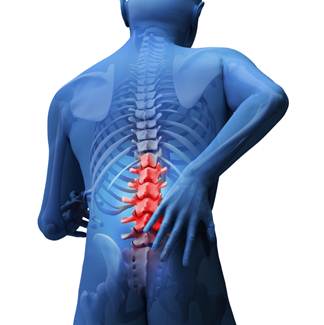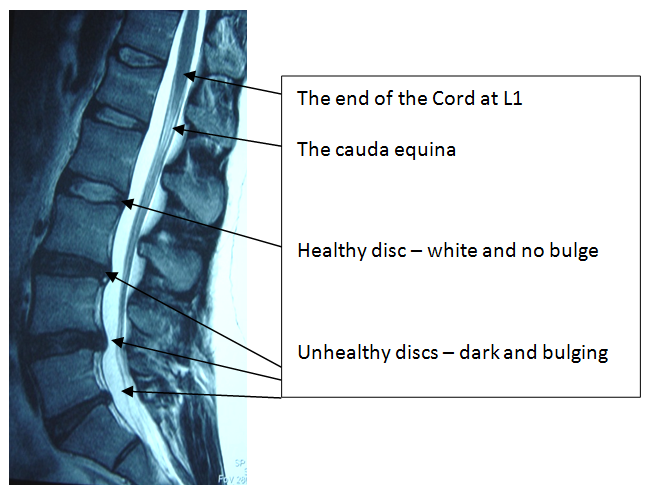
The lumbar spine is the main load-bearing section of the vertebral column in human beings. Our unusual upright stance combined with the stresses of daily life makes us the only creature who commonly suffers back pain.
There are five lumbar vertebrae – numbered L1 – L5. These vertebrae are the largest and strongest in the vertebral column. The lumbar discs are flat and circular objects. They consist of a central firm jelly (nucleus pulposus) contained within a hard fibrous ring (annulus fibrosis); rather like a thick walled tyre filled with stiff jelly.
As we have seen the lumbar spine also has a curve to it – when viewed from the side, one can see that it is convex to the front just like the cervical spine. This is called the lumbar lordosis. Again, like with the cervical spine, it develops after we are born when a child sits up, stands and begins to walk.
The spinal cord ends at about the level of L1 and from it emerge a lot of smaller nerve roots which supply the legs, bowels and bladder. Because they look like a horse’s tail, this leash of nerves is called the “cauda equina”. Like most Latin medicine, it was introduced principally to keep the medical students and patients in the dark and help create a respectful aura around the clinics. They are lovely words but often somewhat confusing, though, not perhaps as confusing as explaining to someone that their paralysis is due to something pressing on their horse’s tail!
An MRI Scan of the Lumbar Spine
